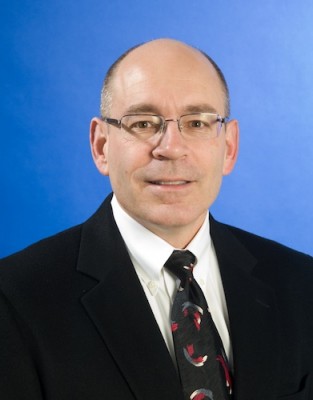
If you were to make a list of the top 100 most-cited articles in medical rehabilitation literature in the past 40 years—and a recent analysis by the Archives of Physical Medicine and Rehabilitation did just that—the name of Neag Physical Therapy Professor Richard Bohannon would turn up three times. Of the 45,700 articles published between 1959 and 2002, the analysis found Bohannon with the second most-cited: his modification of the Ashworth scale, a long-established measurement of muscle spasticity, that his research made more precise.
First published in 1987 in the journal Physical Therapy, Bohannon’s article, co-authored by physical therapist Melissa Smith, has been cited more than a thousand times. The self-deprecating Bohannon calls the citation analysis results “personally gratifying, but leveraged by virtue of the article’s focus on the measurement of an important neurological sign.” He’s also quick to joke that “my wife would say it’s not a cure for cancer and I shouldn’t let it go to my head. But it is an important benchmark for the Neag School and for the Department of Kinesiology’s Program in Physical Therapy.”
Another benchmark comes this fall when Bohannon is formally named a Fellow of the American Society of Neurorehabilitation (ASNR), one of only four such designees. He’ll receive the honor at ASNR’s annual meeting in Montreal at the end of October.
While recognition is important, Bohannon says he believes the vast majority of Neag Doctor of Physical Therapy (DPT) students choose to come to UConn for other reasons. “I hope they’re here because they have an interest in and a dedication to physical therapy, to helping patients,” he says. “We want them to share our feeling that PT is not just a job. That, however, doesn’t diminish the impact and importance of research.”
As for PT alumni, Bohannon is eager for them to maintain strong ties to both the Program and the University. “I hope they would feel free to engage with us,” he says. “I hope they respond to the various surveys we send out. It’s easy to blow off things like that, but I want them to know that their feedback is extremely important.”
It will surely be important in March of 2011 when the Physical Therapy Program is visited by the Commission on the Accreditation of Physical Therapy Education (CAPTE) for review of its Doctor of Physical Therapy Program. By means of site visits and other data, CAPTE will assess the Program’s strengths and weaknesses, how well it prepares its students for PT practice, and generally, how to make a good program better. Bohannon points out that licensure examination scores for Neag PT graduates are very high and that likely will be a factor in securing CAPTE accreditation.
Reflecting on his more than 30 years in academic and professional life, Bohannon says awards, honors, even accreditation are all, as he might put it, “blessings.” But he also playfully puts them in their proper place. He shared his belief that things like this do not necessarily have “eternal” value. On the other hand, says Bohannon, “we have to remember that the “here and now” matters, too!”
 Facebook
Facebook
 Twitter
Twitter
 LinkedIn
LinkedIn
